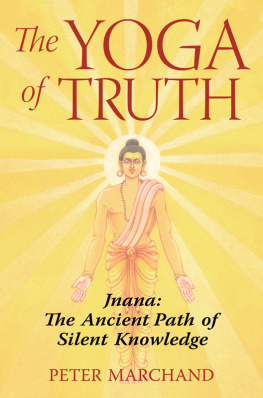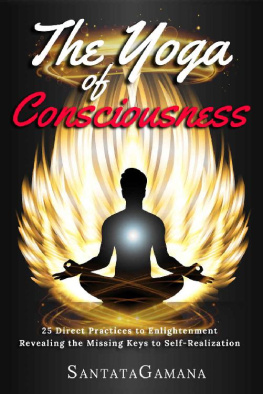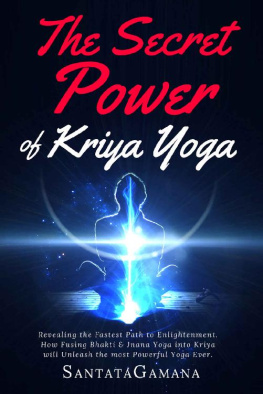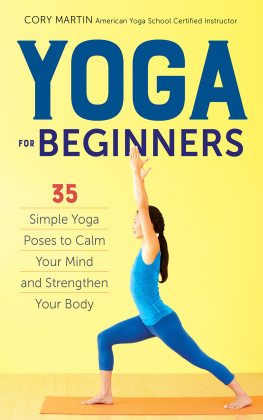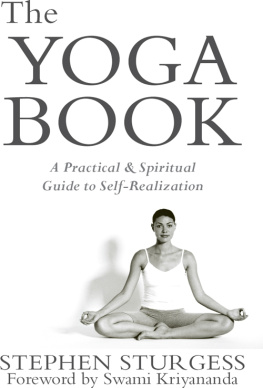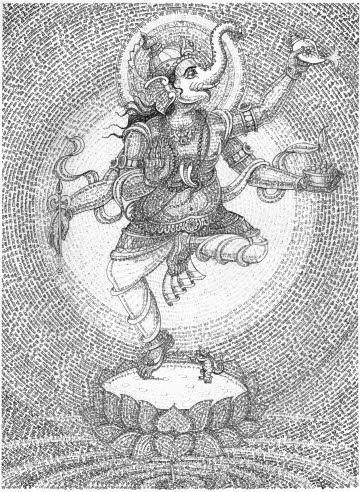
AUM
GAJANANAM BHOOTAGANADI SEVITAM
KAPITTHA JAMBOO PHALASARA BHAKSHAKAM
UMASUTAM SHOKAVINASHAKARAKAM
NAMAMI VIGHNESHWARA TAVA PADAPANKAJAM
AUM
Elephant-faced, worshipped by bhootas and ganas,
taster of the juice of kapittha (wood apple) and jamboo (jamun) fruits, son of Uma, destroyer of grief, I worship your lotus feet.
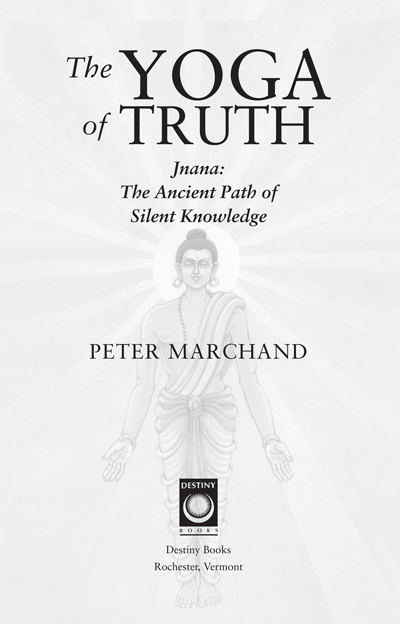
Dedicated to Harish Johari

Acknowledgments

THIS BOOK STARTED as just a few pages that I wanted to write on the subject of jnana yoga, the yoga of true knowledge. Surprisingly, the pages kept coming. About thirty of them appeared in a very few hours, which I then showed to some friends who encouraged me to write more. More came out. Afterward, when I read them myself, they appeared as if new. They are not mine.
So truly, I have nobody to thank for this book but truth itself. I merely tried to note it down as it came. There is nothing new here. Everything I wrote has been written before. Every thought in this book can be found in other books, though the wording is different. Perhaps it is an expression that suits this moment in time, that may suit some people of this time. It brought me so much happiness to write itmaybe some of that joy will also come to those who read it. I can hope for that.
I have dedicated this book to my teacher Harish Johari to thank him for guiding me to this time and this state of mind. If there is any true author of this book, then it is he. When I think back on his teachings, much that is in this book was also there, in some form or other. I also wish to thank the jnanis Nisargadatta Maharaj and Ramana Maharishi, whose words and lives have been a direct inspiration for writing this book. Thus this book is based on the teachings of many, even though Harish Johari is and will always remain my main source of inspiration and truth.
The truth this book carries is the product of a long lineage of teachers that is truly sanatan, original, eternal, and universal. My name is on the cover only because of the responsibility I bear for any errors in it and for these I offer my humble apologies to the teachers.
I thank everyone who has supported me in writing this book, and especially those that read through the draft version and provided me with so many interesting comments: Christine Grnwald, Dominique Van Gerven, Elliot Isenberg, Ganga Puri, Gauri Chopra, Heidi Rauhut, Joe Baxter, John Marchand, Marijke Meeuwissen, Mohit Johri, Monique Marchand, Narmada Devi, Patricia Baxter, Pieter Weltevrede, Rudy Kuhn, Thomas Marchand, and Wil Geraets. Special thanks also are due for the moral support given by Christina Rich Devi. More than thanks are due to Maa Narvada Puri, Sri Avadh Behari Das Kathia Baba, and Swami Avdheshanand Giri Ji Maharaj for their blessings and wise answers. Thanks also to Sapna Johari for her beautiful renditions of the Hindu symbols. I thank the people at Destiny Books for their enthusiasm, their improvements, and obviously, for the publishing itself.
I thank the self for being and the divine mother for this game of life. And the reader, for the reading, of course.
Ram Ram.
Note on the Use of Sanskrit Terms
Converting the Sanskrit language to English is difficult because the Sanskrit alphabet has many more characters. It is particularly difficult to convert the Sanskrit characters that combine vowels and consonants to English without creating spellings that appear strange to some Indian readers. For example, the word yoga is actually written yog in Sanskrit, and a short final a sound is implied in the g. We have included such vowels in order to come as close to the correct pronunciation as possible, but we would like to apologize to our readers who are Indian-language speakers for the factual incorrectness of this practice.
Contents





The Yoga of True Knowledge

THERE IS A YOU, experiencing a world outside of you. Is that not one of the few things that you are rather sure about?
Apparently also, you are reading this book, which is supposed to bring you true knowledge about this miracle called life. Of course, truth is not written in words, though some truth may be found in between or beyond them. Neither is truth invented by authors; it just is, so authors can only do their best to come somewhat close to it.
Jnana yoga, also called gyana yoga, is the yoga of true knowledge. It is based on the Hindu philosophy of nondualism, called advaita (nondual) vedanta (Vedic knowledge). A similar nondualistic view of reality is held by many branches of Buddhism, including Zen, by Taoism, by Islamic Sufism, as well as by some branches of Christianity that follow the Gospel of Thomas. Some of its best-known Hindu teachers are Vashishtha, Adi Shankara, Ramana Maharshi, and Nisargadatta Maharaj.
Jnana yoga looks into the truth about who we are and what we are experiencing. The full realization of this truth brings enlightenment. Of course, all yogas offer a direct road to enlightenment if followed fully. Whether a particular road is suitable to reach this goal is a personal matter, largely depending on where you are coming from.
Jnana yoga can serve all people, whatever path they take. It keeps the true objective of yoga in sight and offers the blessing of truth getting closer at every step. But that does not make it the only or even the best yogic path for everyone. Most yogis will combine jnana yoga with other yogic paths, such as bhakti yoga, karma yoga, and tantra yoga, as explained in .
Jnana yoga is not based on any preliminary idea or dogma that you have to accept. It starts from direct experiences that anyone can have, even though these experiences may sometimes require deep contemplation and meditation.
But how to recognize truth? When we want to know the truth about something, we do not want to be fooled by appearances, by that which only appears and then disappears. Knowing truth cannot mean to know now that this is that, only to become something else later, depending on circumstance. So truth is that which lies beyond appearance and thus is never changing. If truth were changing all the time, how could it be truth? If a person tells you one day that he went on a vacation trip to China, only to tell you the next day that it was Switzerland, what can it tell you at all? Truth requires consistency.
Of course, appearances also have some truth, some reality. They may be called relative, temporary, or partial truth. In jnana yoga, however, the objective is to know the absolute truth about life, the truth that is never changing, eternal.
Next page
